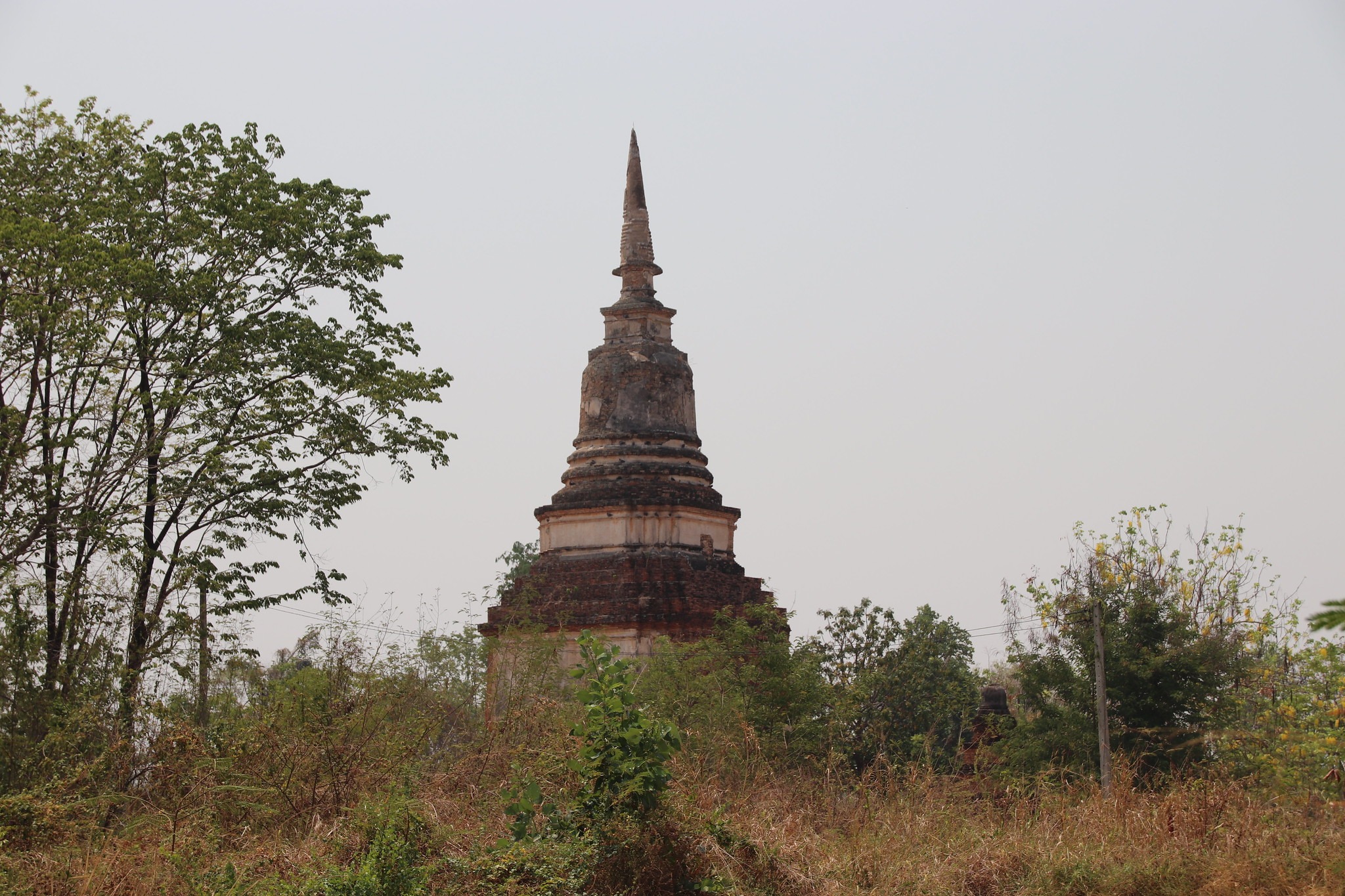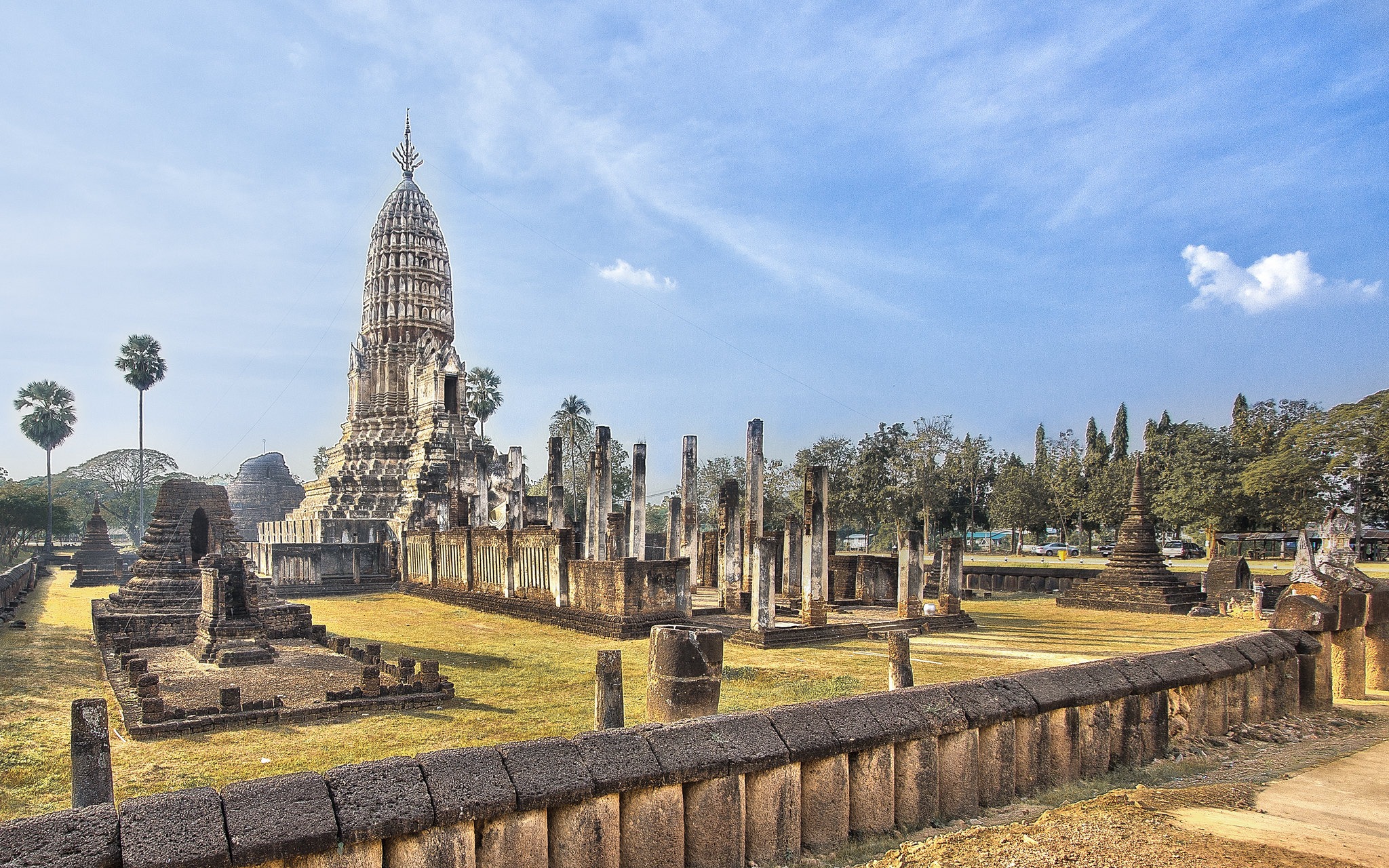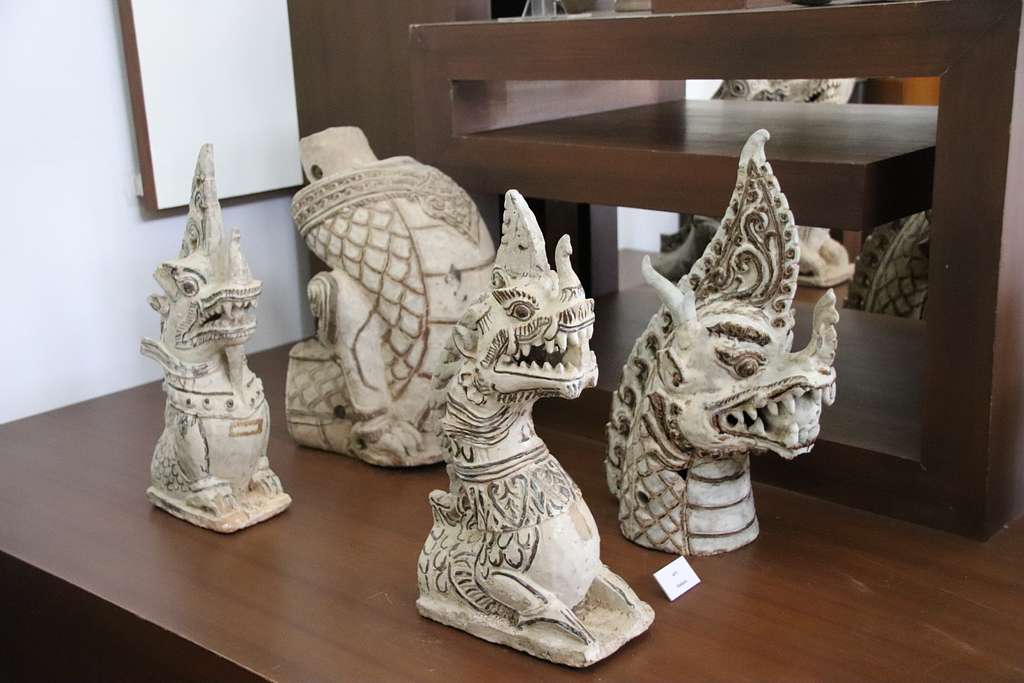Located in northern Thailand, Sukhothai is a historic city that served as the capital of the first independent Thai kingdom founded in the 13th century. Its name, meaning “Dawn of Happiness,” is considered the place where the golden age of Thai culture and art began. The region stands out with its impressive historical parks, ancient temples, and Buddha statues, which are on the UNESCO World Heritage List.
Today, Sukhothai is an attractive destination for both history and nature enthusiasts. Thanks to its preserved archaeological sites, surrounding natural beauties, and traditional village life, it offers visitors a rich cultural experience. Especially Sukhothai Historical Park, which showcases the finest examples of Thai architecture, is the first stop for travelers wishing to explore the region.
1. Sukhothai Historical Park
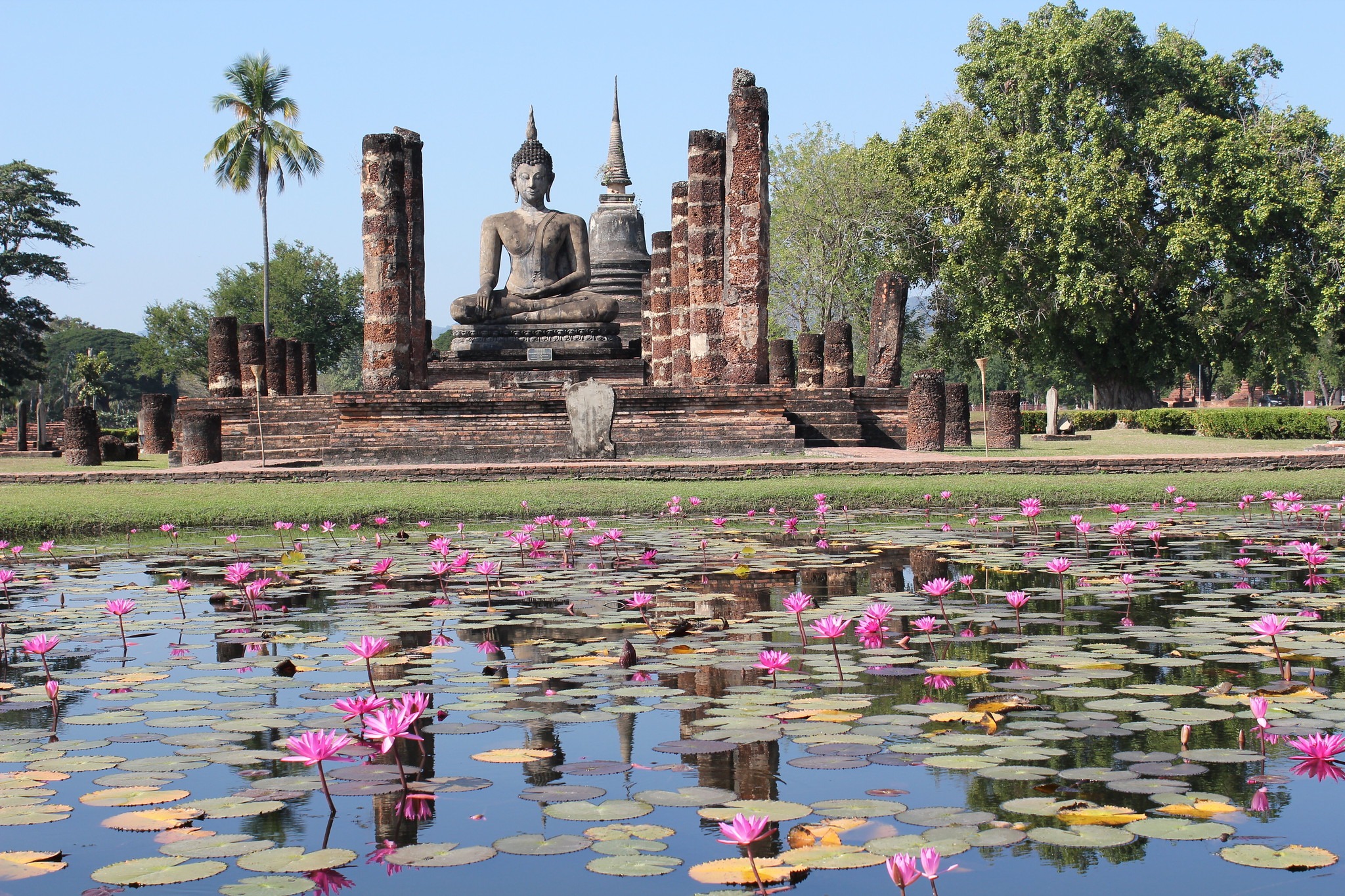
Sukhothai Historical Park is one of the most valuable treasures of Thailand’s cultural heritage. Protected as a UNESCO World Heritage site, this park encompasses hundreds of temple ruins and historical structures built in the 13th and 14th centuries in the capital of the Sukhothai Kingdom. The park bears the magnificent traces of Thai architecture and art with its gigantic Buddha statues, lotus ponds, stupas adorned with stone carvings, and impressive columned halls. The ruins, connected by organized pathways, also give visitors an idea of the city planning of that era.
Today, the park consists of both central and surrounding areas spread over a wide area and can be easily explored by bicycle or on foot. Especially in the morning or at sunset, the light and shadow plays around the temples offer fascinating views for photographers and history enthusiasts. In addition, the traditional festivals and light shows organized in the park allow visitors to imagine the splendor of the period. Sukhothai Historical Park is a unique stop for anyone who wants to understand Thailand’s roots.
2. Wat Mahathat (the largest and most important temple within the park)
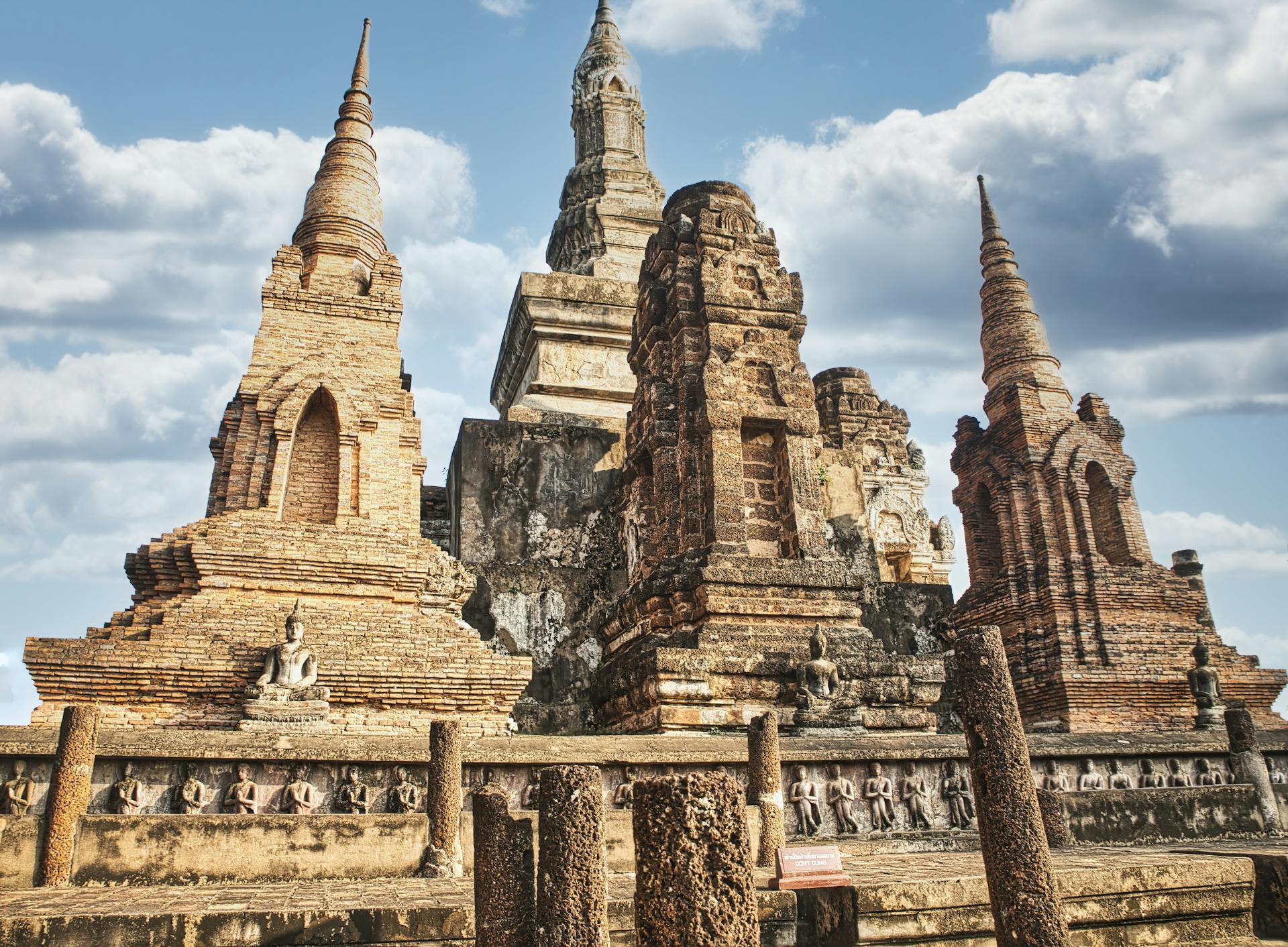
Wat Mahathat is an impressive structure located at the heart of Sukhothai Historical Park and is considered the largest and most important temple. Built in the 13th century, this sacred site presents one of the finest examples of Sukhothai architecture. The large lotus-bud-shaped chedi (stupa) in the center of the temple is believed to house Buddha’s sacred relics and forms an impressive harmony with the many smaller chedis surrounding it. The Buddha statues and stone carvings in the main worship hall reflect the elegant artistic sense of the period.
Throughout history, Wat Mahathat has served as the religious and spiritual center of Sukhothai. Today, visitors come to see its standing columns, the reflection views surrounded by ponds, and the giant Buddha statues that become even more mystical in the moonlight. While the temple’s orderly symmetry and aesthetic harmony continue to be a spiritual symbol for the Thai people, it also offers an unforgettable historical journey for tourists visiting the region.
3. Wat Si Chum (famous for its gigantic seated Buddha statue)
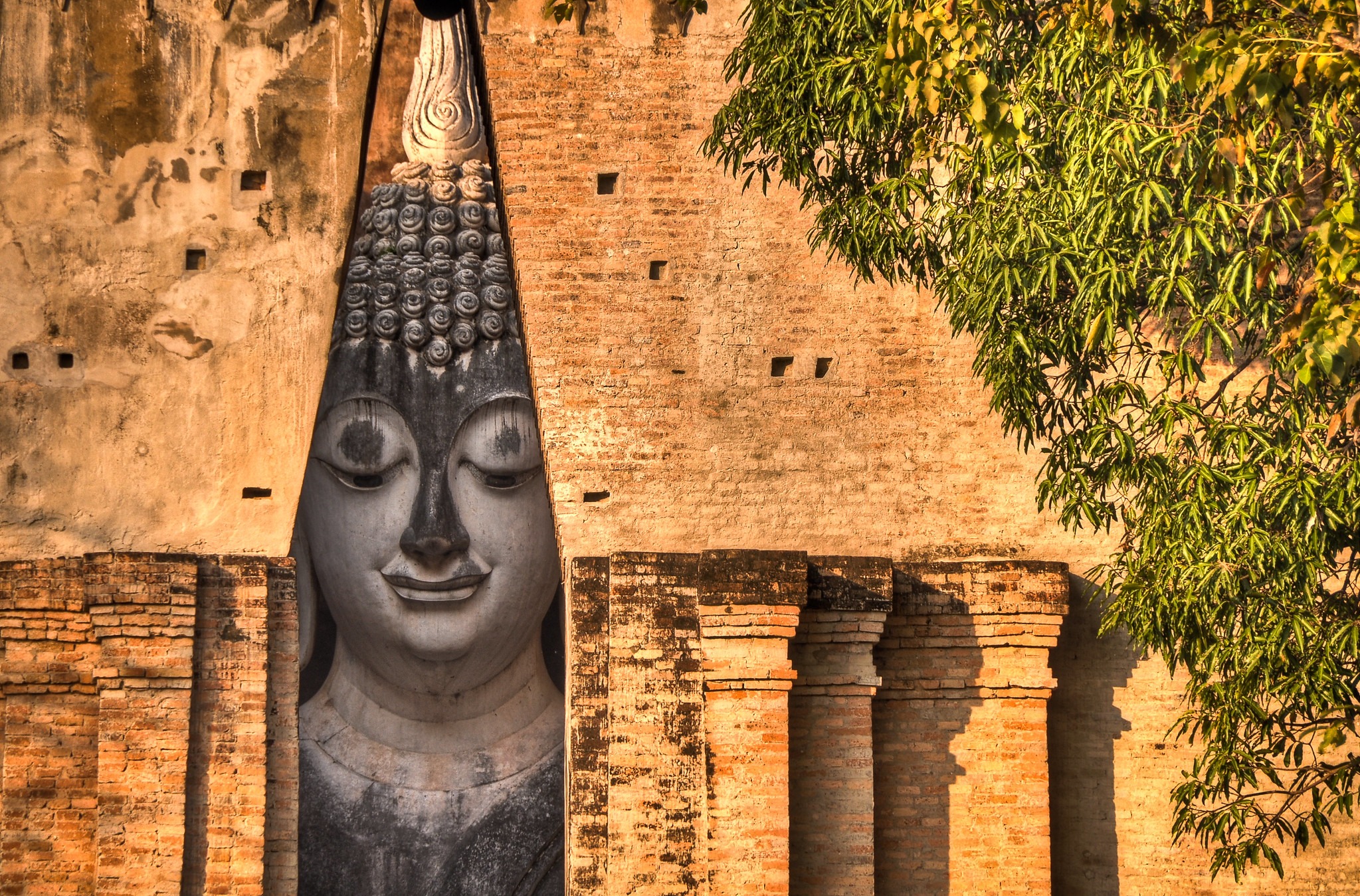
Wat Si Chum is one of the most impressive and symbolic structures of Sukhothai Historical Park. Especially famous for its gigantic seated Buddha statue, which is 15 meters high, this temple offers an atmosphere that fascinates visitors. This Buddha figure, called “Phra Achana,” evokes a sense of peace and confidence with its calm facial expression and graceful hand gestures. The open-roof mondop (temple building) where the statue is located has a highly impressive architectural arrangement with its thick walls and narrow entrance door.
The stone carvings on the walls of Wat Si Chum are filled with detailed scenes depicting the life stories of Buddha and shed light on the artistic understanding of the period. When the temple’s history combines with a mystical atmosphere, the time spent here turns into an unforgettable experience. Both locals and foreign visitors see Wat Si Chum as one of Sukhothai’s most iconic structures and regard it as a sacred place that must be visited.
4. Wat Sa Si (the elegant temple in the middle of the lake)
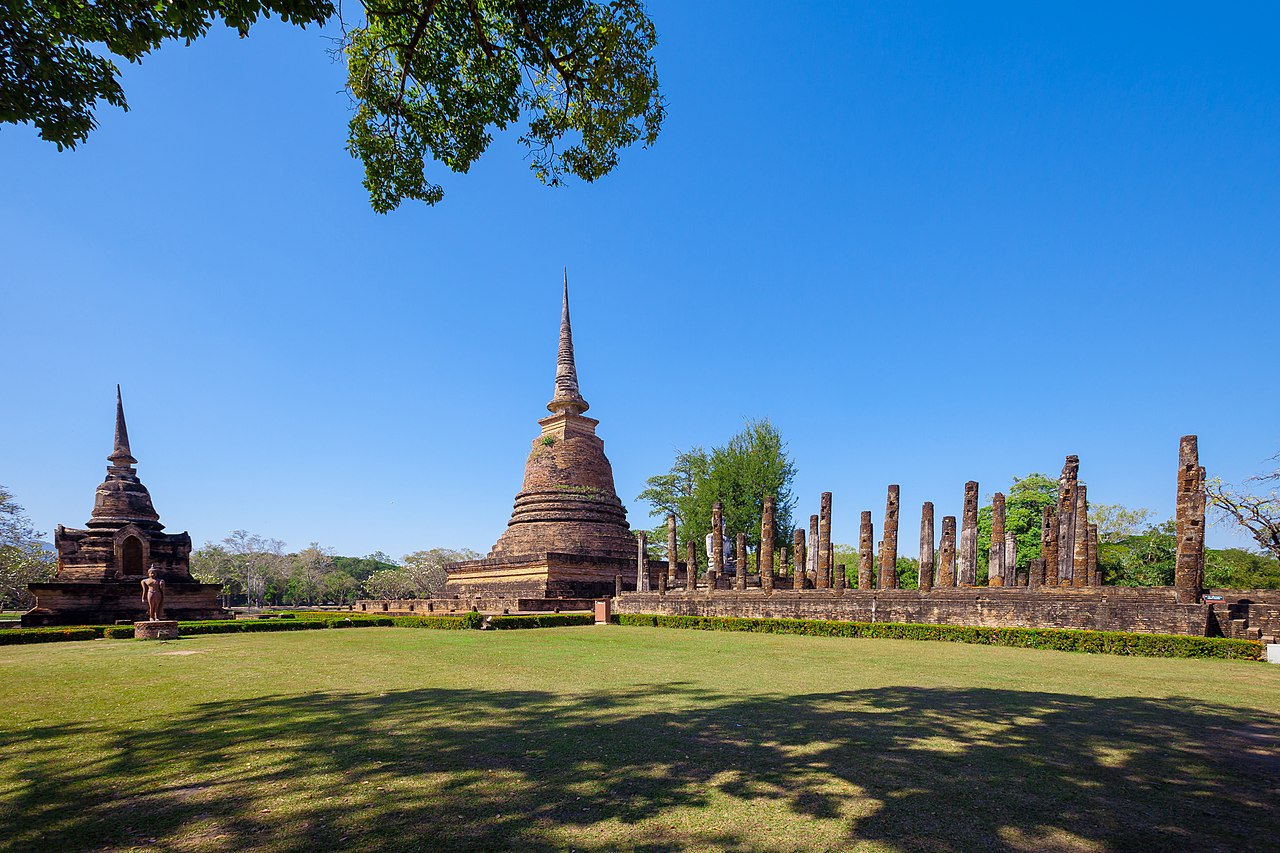
Wat Sa Si is one of the most romantic and aesthetically fascinating temples in Sukhothai Historical Park. Located in the middle of a pond filled with lotus flowers, this elegant structure rises on an islet reached by a small bridge. The bell-shaped chedi in the center reflects classic Sukhothai architecture, while the seated Buddha statue in front of it creates a peaceful atmosphere. The reflection of the temple in the pond surrounding it offers an impressive view, especially at sunset.
Wat Sa Si is generally known for its tranquility and peaceful environment; therefore, it is preferred by both locals and tourists for meditation and the pursuit of inner calm. The natural beauty created by the surrounding trees and water combines with the elegance of the historical architecture to create an unforgettable experience. Also a very popular spot for photographers, Wat Sa Si is an important symbol that reveals Sukhothai’s unique cultural heritage.
5. Wat Trapang Thong (the temple surrounded by the lotus lake)

Wat Trapang Thong is a historic temple located in one of the most beautiful spots of Sukhothai, in the middle of a pond filled with lotus flowers. This island temple, accessible by a small bridge, stands out with both its architecture and its natural surroundings. The name Wat Trapang Thong, meaning “Golden Pond Temple,” offers a peaceful view especially among the lotus flowers that bloom in the morning hours.
The chedi and Buddha statues located at the center of the temple reflect the simplicity and elegance of the classic Sukhothai period. This place is frequently visited not only by tourists but also by locals for prayer and meditation. The silhouette of the temple reflected on the pond and the quiet, calm atmosphere surrounding it make Wat Trapang Thong one of the most special stops in Sukhothai.
6. Wat Sorasak (chedi decorated with elephant carvings)

Wat Sorasak is an impressive temple located in Sukhothai Historical Park, standing out especially with its chedi decorated with elephant carvings. Thought to have been built in the 15th century, this structure reveals the symbolic artistic understanding of the period. The bell-shaped chedi in the center attracts attention with the elephant figures surrounding it; these elephants are depicted as sacred beings believed to protect the structure. This feature is frequently seen in Thai architecture but is a rare and well-preserved example in Sukhothai.
With its historical texture and unique design, Wat Sorasak is an interesting stop for both photographers and history enthusiasts. The calm surroundings of the temple allow visitors to both examine the architecture and spend time in a peaceful atmosphere. This temple, which must be seen while exploring Sukhothai, stands out as a unique structure carrying the traces of the past to the present day.
7. Wat Phra Phai Luang (a temple bearing traces of Khmer architecture)

Wat Phra Phai Luang is one of the oldest and most impressive structures of Sukhothai Historical Park. This temple, which carries architectural features from the Khmer period, clearly shows the traces of the transition from Hindu influence to Buddhism in the region. The structure, consisting of three main prang (towers), draws attention with the detailed stone carvings and decorations on the central prang. These features reflect the strong aesthetic understanding of Khmer art.
Throughout history, Wat Phra Phai Luang has held importance as both a religious and cultural center. The large complex of the temple, with various Buddha statues and ritual areas, displays the worship traditions of the period. Even today, the magnificently standing ruins offer visitors a unique opportunity to explore Thailand’s early history and architectural evolution.
8. Ramkhamhaeng National Museum

Ramkhamhaeng National Museum is an important cultural center located just outside the east gate of Sukhothai Historical Park. Opened in 1964 by King Bhumibol Adulyadej and Queen Sirikit, the museum houses about 2,000 artifacts such as statues, stone tablets, ceramic pieces, and everyday items found during archaeological excavations in the 1960s. The museum consists of three main buildings—the main exhibition hall, the “Lai Sue Thai” memorial structure, and outdoor exhibitions—and displays historical valuables collected from nearby areas such as Sukhothai, Si Satchanalai, and Kamphaeng Phet.
Visitors can see many works, from bronze and stone Buddha statues to Khmer-period remains; ceramics and decorative objects influenced by Lanna and Sukhothai. In addition, the museum offers a deep look into Thailand’s cultural roots through exhibitions introducing important historical documents and inscriptions such as Ramkhamhaeng’s discovery of the Sukhothai script. The entrance fee is generally about 150 Baht for foreigners, and the museum is open every day from 9:00 am to 4:00 pm.
A visit offers an excellent opportunity for those who want to protect themselves from the heat during the exploration of the archaeological sites and to see historical artifacts in a more systematic way. Its calm atmosphere and rich collections make it a valuable stop that completes the Sukhothai experience for history and art enthusiasts.
9. Wat Chetupon (the temple notable for its Buddha figures)
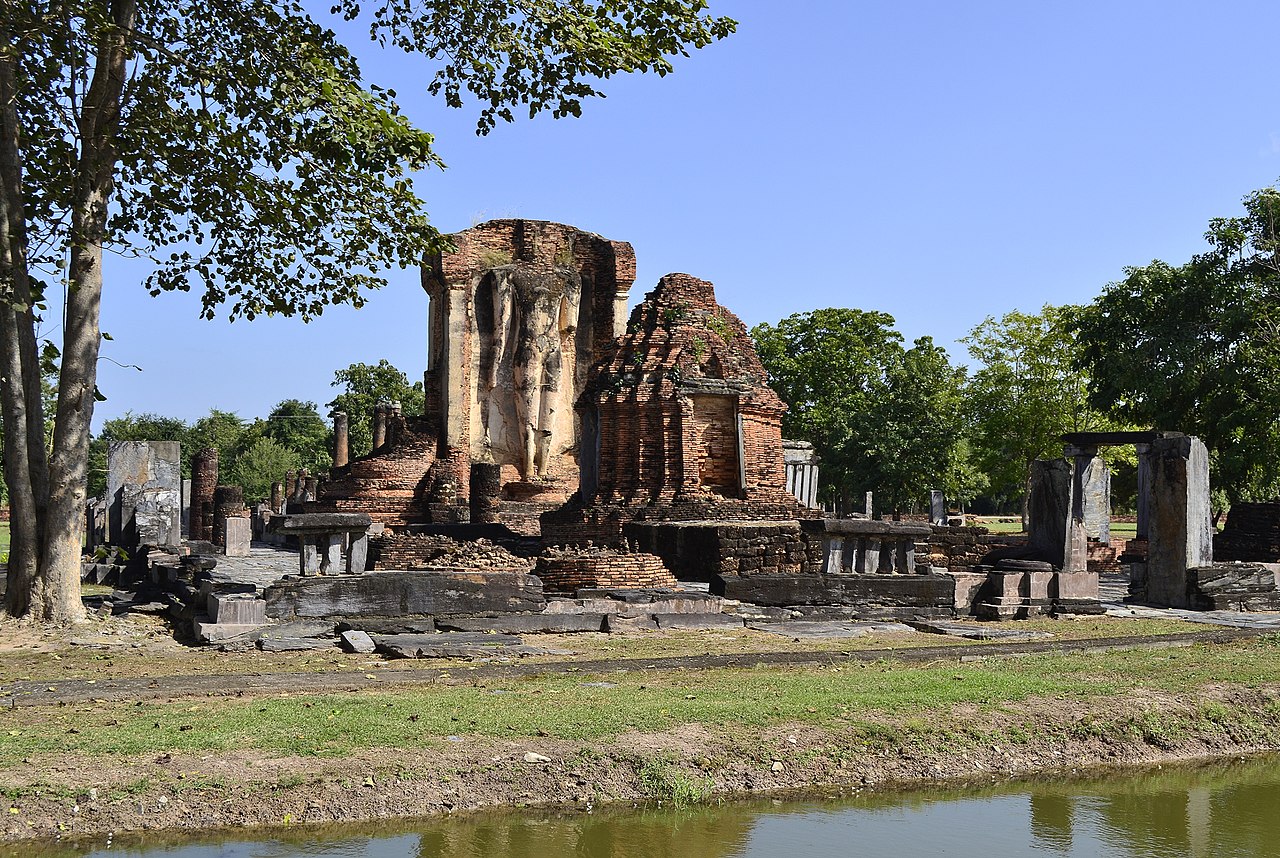
Wat Chetuphon (Wat Chetupon) is an important temple located in the southern part of Sukhothai Historical Park, about 2 km south of the Namo Gate. It means “Temple of the Seven Sacred Relics,” and this name refers to a belief that sacred relics were kept here. It stands out especially with the gigantic Buddha statues located on the four sides of the main mandapa: there is a walking figure in the east, a seated one in the north, a standing one in the west, and a reclining one in the south. This rare and symbolic arrangement makes the temple one of Sukhothai’s spiritual centers.
The thick brick walls and moat surrounding the temple contribute to the preservation of the historical structure. Although the exact construction date is not known, it is known that it was in use from the late 13th century and underwent restorations in later centuries; repairs were made in 1414 and in the 1970s. The magnificent four Buddha statues contain fine craftsmanship and solid symmetry reflecting the artistic understanding of the Sukhothai period. These statues present the teaching of the four main postures of Buddhist iconography (sitting, standing, walking, and reclining into nirvana) in an impressive place in a tangible way.
The calm atmosphere of Wat Chetuphon offers visitors both a historical and spiritual journey. The temple’s mystical aura spreads around the Buddha statue left in the shade, and visitors can explore this sacred place in deep contemplation. Due to its location in the southern part of the park, this temple, where the tourist flow is relatively low, is ideal for those seeking a peaceful experience.
10. Wat Si Sawai (an old Khmer temple with Indian influences)

Wat Si Sawai is located in the southwest of Sukhothai Historical Park, just a few hundred meters from Wat Mahathat. Built by the Khmers in the 12th and 13th centuries, this temple stands out with its three large prang (towers). These structures were designed for Hindu worship but were later adapted to Theravada Buddhism. Surrounded by double walls and a moat, the complex remains close to its original form with its lower parts decorated with mosaics made of laterite and its upper parts completed with brick and stucco.
Upon entering, the approximately 15-meter-high central prang rising from the main tower creates a strong visual effect together with the adjacent twin prangs. The architecture of these structures resembles the style in Angkor and contains Lopburi or Khmer influences. The magnificence of the temple, combined with the surrounding greenery and silence, offers visitors both a mystical and historical atmosphere. In addition, the decorations on the inner walls in the shapes of snakes and makara carry symbolic traces of Hindu mythology. These features make Wat Si Sawai one of the oldest and architecturally most original temples of Sukhothai.
11. Wat Chang Lom (stupa with elephant motifs)

Wat Chang Lom (Stupa with Elephant Motifs) is located near the eastern border of Sukhothai Historical Park and draws attention with its impressive structure meaning “Temple Surrounded by Elephants.” The stupa, estimated to have been built by King Ramkhamhaeng in the late 13th century, has a large bell-shaped dome in the Sri Lankan style. Rising on a square base, this structure is decorated with 32 full-bodied elephant statues placed around the base; these elephants both add visual power to the temple and serve symbolically as religious guardians.
On the second level of the temple, there are 20 reliefs of walking Buddhas inside niches, and these details add a spiritual depth to the structure. In front of it are the remains of a vihara (worship hall). The complex is surrounded by a moat and is encircled by the remains of many small stupas. This arrangement reflects the standards of Sukhothai period architecture, offering visitors both an aesthetic tour and a rich archaeological experience.
Wat Chang Lom is one of the better-preserved examples compared to similar temples in the Si Satchanalai area located in the south of Sukhothai. Its wide open areas and the surrounding lush agricultural land make visiting the temple both historically and visually fascinating. Especially for photographers, the dramatic compositions created by the shadows of the elephant statues on the stupa offer shooting opportunities.
12. Wat Ton Chan (a traditional temple with wooden details)
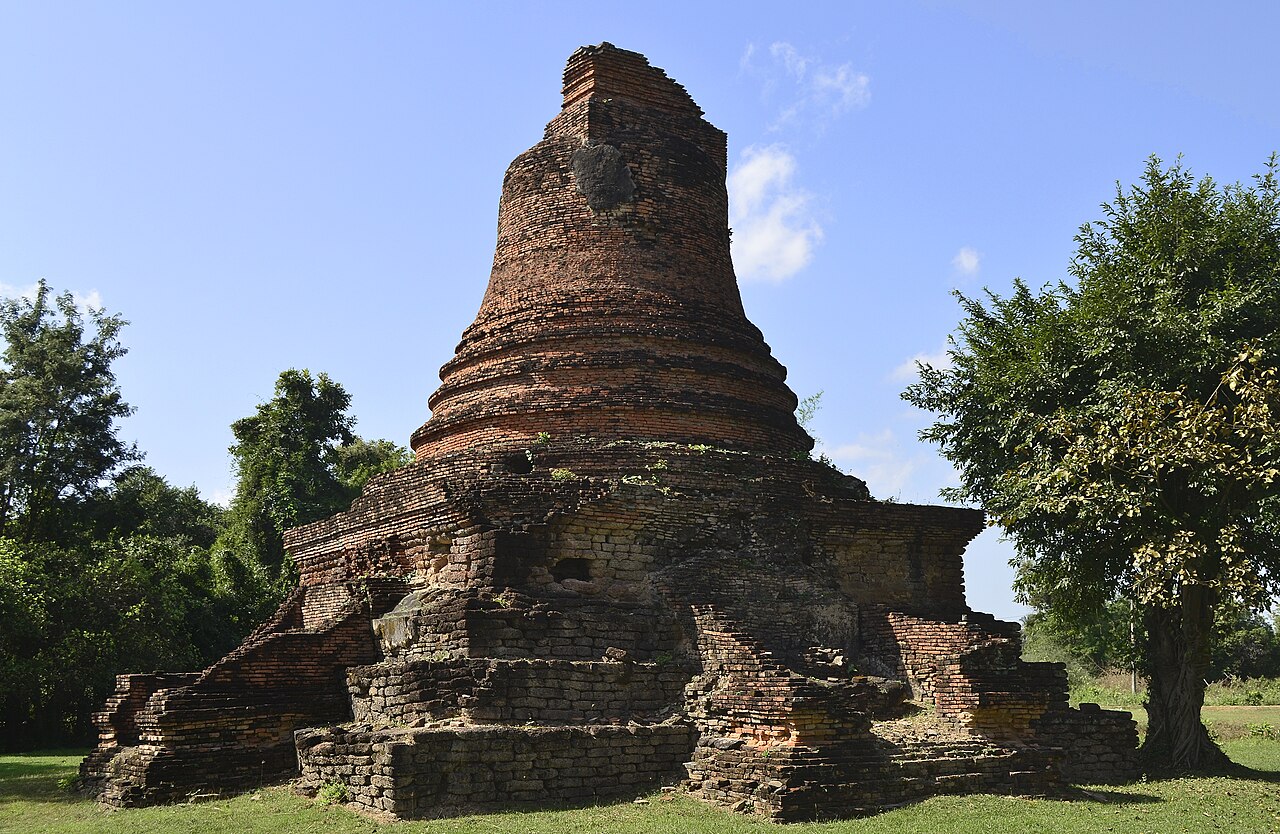
Wat Ton Chan means “Sandalwood Temple” in Thai and is located in the southern part of Sukhothai Historical Park, a little beyond the Pratu Namo gate. Built in the 14th century, this small complex consists of the remains of a chedi (stupa), a viharn (worship hall), and a few small structures. The large bell-shaped chedi in the Singhalese (Sri Lankan) style rises on a square laterite base and has niches on its four sides containing seated Buddha statues. In the viharn, there is an ancient seated Buddha statue on a high base; unfortunately, its head and arms have been damaged over time.
The temple offers a highly symmetrical and protected structure thanks to the surrounding moat. Today, terracotta votive tablets (called “Sa Ne Chan”) discovered during excavations are exhibited here, and these elements carry interesting traces of the temple’s religious past. Wat Ton Chan, being in a relatively less visited area, offers the opportunity to explore in a quiet and calm atmosphere; in this respect, it is a peaceful stop that attracts both photographers and history enthusiasts.
This temple is an important example for those who want to understand the late period features of Sukhothai architecture. Both the stupa, which stands out with its chedi form, and the votive tablets offer visitors valuable clues about the ritual culture and structural aesthetics of the period.
13. Wat Phra Bat Noi (a small but historically important temple)

Wat Phra Bat Noi is located in the western part of Sukhothai Historical Park, on a small but meaningful hill rising under dense forest cover. Its name means “Temple of the Small Buddha Footprint Hill” and it is located about 2.5 km west of the city walls. A four-sided chedi (stupa) built on rubble stones offers a peaceful atmosphere; it is claimed that there was once a Buddha footprint relief on its upper part. The quiet meditative environment around it is particularly fascinating for travelers seeking a sense of serenity typical of such forest monasteries.
According to most historians, the temple carries the architectural features of the Sukhothai period (14th–18th centuries) and, despite its small size, offers clues about the ritual practices of the time. The building complex includes a wihan (worship hall), a square-based chedi, and a few meditation cells; it is thought that monks retreated to seclusion in these cells. For visitors who want to experience a quiet walk and meditation away from the noticeable crowds, this is an ideal spot. Unlike Sukhothai’s crowded temples, the natural ambiance and retreat areas around Wat Phra Bat Noi offer a unique setting.
14. Wat Saphan Hin (offers a panoramic view with the Buddha statue on the hill)

Wat Saphan Hin, meaning “Stone Bridge Temple,” is located in the western part of Sukhothai Historical Park, on a hill rising about 200 meters high. It takes its name from the stone slabs that pave the path leading up the hill (“saphan hin”). Positioned on the hill, this temple was built for the spiritual leader of the Sukhothai Kingdom, the Sangharāja, and the stone-covered path makes the walking experience even more impactful.
The most impressive feature of Wat Saphan Hin is the large standing Buddha statue known as “Phra Attharot,” which is 12.5 meters high. This Buddha statue faces east toward the Sukhothai plain, making the fear-dispelling gesture (Abhayamudra) with its right hand. The statue bears the elegant lines of Sukhothai period art while also combining with the surrounding scenery to offer a magnificent panoramic view. The walk required to reach the temple provides visitors with both a physical and spiritual experience in a reflective atmosphere.
Wat Saphan Hin, with its simple architecture, commanding hilltop position, and large Buddha statue, is among the most beloved temples in Sukhothai. It offers a peaceful atmosphere intertwined with nature as well as being a historically and artistically valuable stop. Visitors can capture unforgettable photographs and views at this temple while also establishing a meaningful connection to the depths of ancient Sukhothai culture.
15. Wat Ratcha Phra Phai Luang (reflects Khmer influences)



